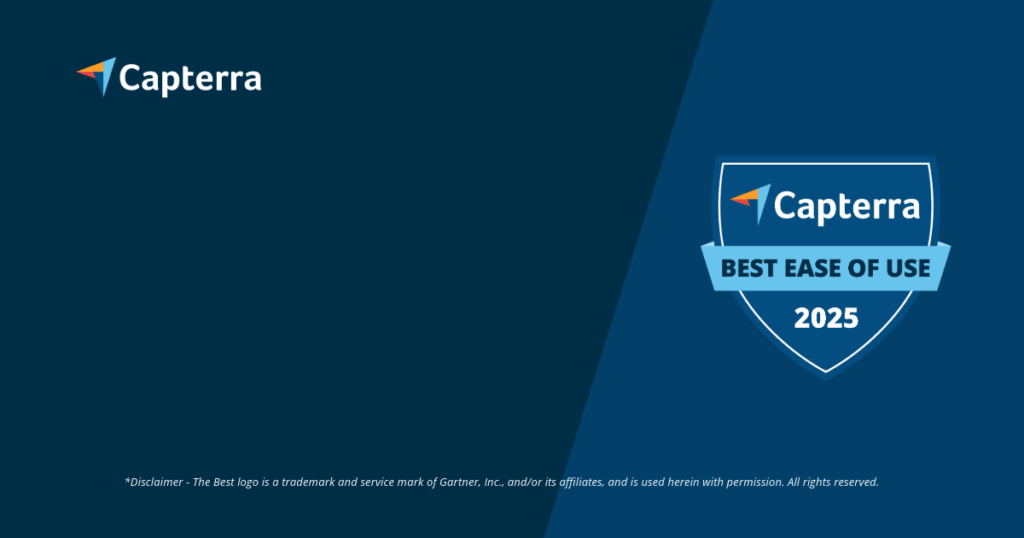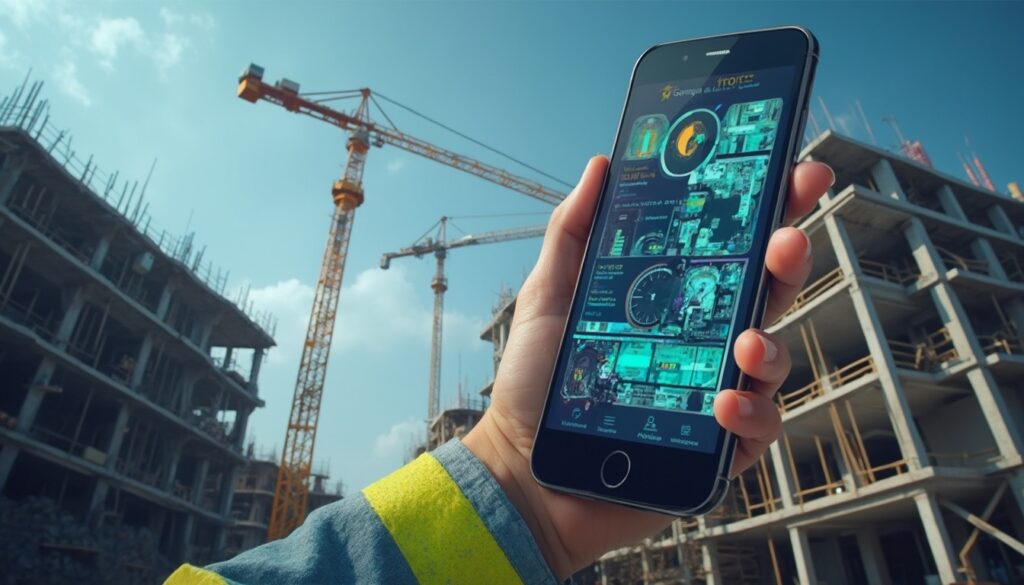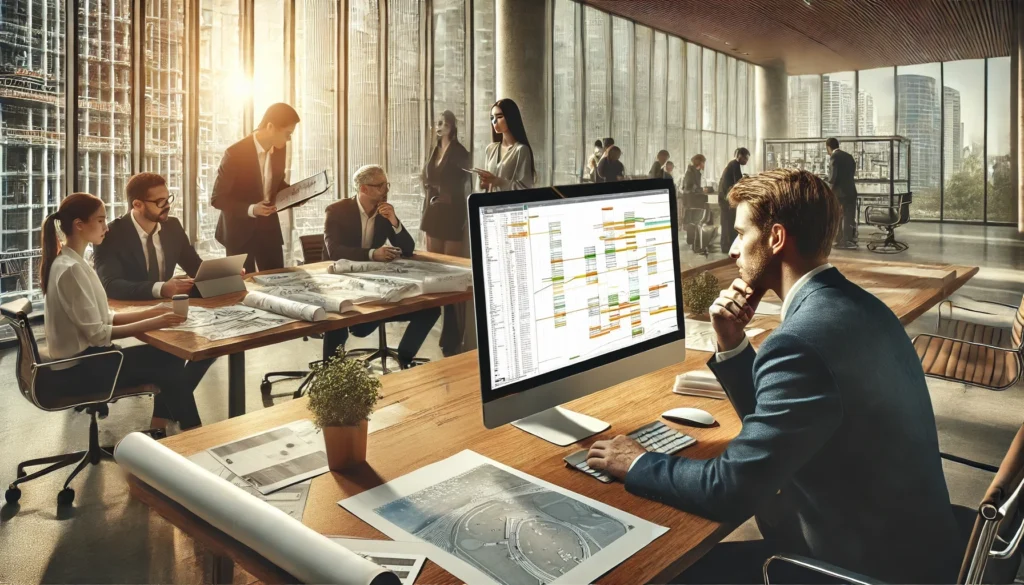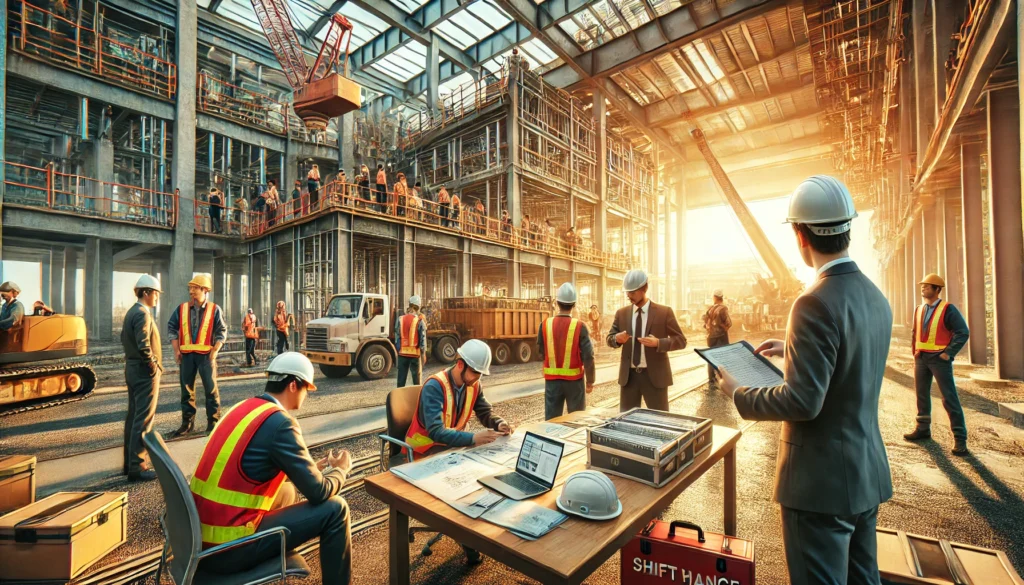No more chaos with paper: The costs of manual management
In many companies, facility management ties up enormous resources due to manual processes. Coordinating maintenance appointments via phone and documenting in Excel spreadsheets leads to an administrative effort that can reduce productivity by up to 25%. Data transfer errors are common and cause avoidable costs. Often, up to 15% of savings potentials remain untapped because a central data repository is missing. A digital solution provides relief by breaking down information silos and automating processes. Transitioning to a digital platform can reduce paper consumption and administrative effort by at least 20%, freeing up valuable time for strategic tasks instead of getting bogged down searching for information.
Central functions of modern facility management software
Modern building management software consolidates all relevant tasks on a single platform. This increases efficiency and improves communication among all stakeholders. Instead of siloed solutions, you get a system that digitally supports the entire lifecycle of a property. Core functionalities typically include:
- Automated order management: Creating, assigning, and tracking maintenance and repair orders in real-time.
- Central document management: Legally compliant storage of inspection protocols, maintenance histories, and plans, accessible at any time.
- Mobile work: Technicians on-site can access all relevant data through mobile apps and document their work directly, improving response times by 30%.
- Resource and schedule planning: Optimized deployment planning of personnel and materials, which can reduce planning time by up to 65%.
- Reporting and analysis: Meaningful reports at the push of a button provide valuable decision-making foundations for cost control and process optimization.
This centralization of data and processes is the foundation for more efficient and proactive building management.
Measurable cost reduction through digital processes
Implementing facility management software is an investment that pays off quickly. By automating routine tasks and optimizing resource usage, operating costs can be significantly reduced. For example, optimized route planning for technicians leads to 45% fewer on-site visits, directly saving travel costs and working hours. Preventive maintenance planning based on real-time data can reduce the risk of equipment failures by over 50%. This avoids costly emergency repairs and production downtimes. A transparent cost recording in the maintenance software ensures that you always have a complete overview of all expenses. This allows you to plan budgets accurately and make informed decisions that contribute to the long-term increase in value of your properties.
Legal certainty and compliance at the push of a button
Compliance with legal regulations and operator responsibilities is a central task in facility management. Comprehensive and traceable documentation is critical in case of damages. Software solutions help systematically meet the requirements of standards such as the GEFMA guidelines. With digital checklists and photo documentation, the legally compliant execution of all tasks is reliably recorded. All changes and work steps are time-stamped and stored immutably. This transparency not only reduces liability risks but also greatly simplifies audits and certifications. A good overview of CAFM software shows that ensuring legal compliance is one of the most appreciated features by customers.
Simplicity as the key: Why acceptance is crucial
The best software is useless if it is not accepted by the employees. Many complex CAFM systems require weeks of training and face rejection on the construction site or by service personnel. Here lies the critical advantage of a straightforward solution. Valoon relies on a platform that works via WhatsApp – a tool that already 9 out of 10 employees use daily. Training efforts drop to zero, ensuring immediate and widespread acceptance across the team. Tasks, defects, and working hours are easily recorded via chat, including photos and voice messages. This simplicity bridges language barriers and digital hurdles, boosting productivity by up to 25%, especially in international teams. An intuitive property management software must bridge the gap between office and construction site, not create new divides.
Future trends in facility management: AI and IoT
Digitalization in facility management is progressing rapidly. Two technologies are significantly shaping the future of the industry. The integration of artificial intelligence (AI) and the Internet of Things (IoT) elevates efficiency to a new level. IoT sensors in buildings provide real-time data on the condition of systems or space utilization. This data enables an AI to predict maintenance needs before a defect occurs. Such proactive systems can reduce unplanned downtime by up to 70%. Additionally, they optimize energy consumption by intelligently adjusting heating and lighting to actual usage. A modern maintenance management system will increasingly rely on these technologies to not only manage buildings but to control them intelligently. The global market for FM services is growing annually by over 6%, driven by exactly these technological innovations.
Conclusion: Your advantage with Valoon
A modern facility management software is not a cost factor but a decisive lever for more efficiency and legal security. It transforms unstructured processes into efficient, automated workflows. With Valoon, you benefit from a solution that is consistently focused on simplicity. You reduce your administrative effort, lower operating costs, and ensure comprehensive documentation – all without complicated software implementation. Book your free demo now and discover how easy the transition to digital facility management can be.
More Links
Wikipedia provides general information about facility management.
PwC offers insights into current trends and developments in the Facility Management Monitor 2025.
Das Federal Environment Agency informs about energy-saving buildings.
Die Consumer Advice Center explains the energy performance certificate for residential buildings.
Das Specialist portal facility-management.de provides an article about digital facility management.
Das Handelsblatt highlights digitalization in facility management.
PwC addresses opportunities and challenges in facility management.
Der BUND provides information on energy-efficient buildings.
Das Magazine pfad-a.de discusses the importance and advantages of a long-term maintenance plan for energy-efficient building renovation.
FAQ
Is facility management software also suitable for small businesses?
Yes, absolutely. Modern, cloud-based solutions are scalable and often modular. This allows small and medium-sized enterprises to benefit from the advantages of digitalization without having to invest in expensive and oversized systems. Solutions like Valoon are particularly ideal for SMEs as they require no IT effort or training.
How complex is the implementation of such software?
The effort depends heavily on the chosen solution. While traditional CAFM systems often require lengthy implementation projects, modern, intuitive platforms can be ready for use in just a few days. Valoon uses WhatsApp as its base, making implementation efforts minimal since employees are already familiar with the interface.
What data is recorded in facility management software?
Typically, all building-relevant data is recorded: master data on systems and equipment, maintenance histories, inspection protocols, fault reports, working hours, consumed materials, as well as all communication regarding orders. The goal is to achieve a central and comprehensive data repository.
How is data security ensured?
Reputable providers rely on certified data centers in Germany or the EU and ensure compliance with the GDPR. Data transfers are encrypted, and access is controlled through a roles and permissions system, so that each user only sees the information relevant to them.








